
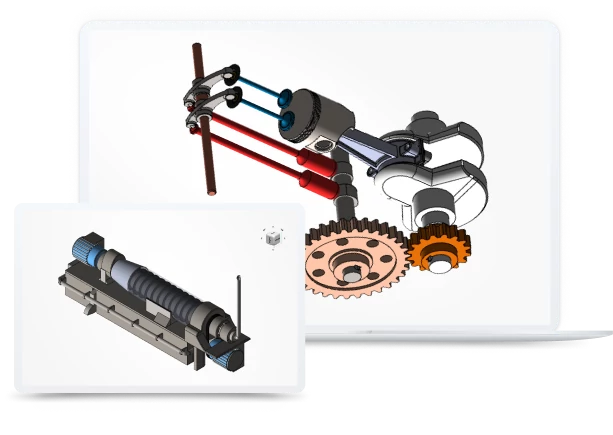
How to convert IFC
to OBJ?
Applications for end-users. SDK's and tools for software developers. Custom development services for businesses.
Trusted by industry leaders







Available in CAD Exchanger Products
 CAD Exchanger Lab
CAD Exchanger Lab
Desktop app to view, explore and convert 3D CAD data across 30+ file formats
Learn more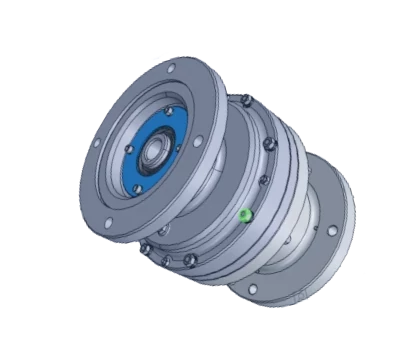
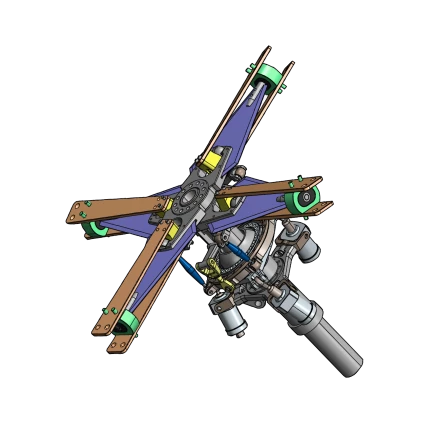
IFC
IFC, an open file format widely embraced in the AEC industry, enables information exchange and collaboration throughout the project lifecycle between diverse software applications. It contains detailed and structured data about building and construction elements, such as walls, floors, windows, etc.
Supported versions
Here are the currently supported versions by CAD Exchanger:
IFC2X3 is commonly used in various industries, allowing you to easily exchange data among software platforms.
IFC4 (up to 4.3) introduces new data schemas and refinements to further enhance interoperability and data exchange reliability.
Support of IFC in CAD Exchanger
CAD Exchanger can import IFC files of versions 2X3 and 4 (up to 4.3) and export IFC files of version 2X3. Such support includes:
- B-rep and polygonal representations;
- assembly structure;
- names;
- user-defined properties;
- colors;
- layers.
Follow this link to check out all the CAD Exchanger products.
Pros of the format
Variety of entities
One of the key advantages of the IFC format is its extensive support for entities specific to the architecture and construction domain. It provides a comprehensive set of predefined entities that capture the elements and components found in projects. These entities range from fundamental elements like walls, floors, and doors to more specific elements such as windows, stairs, and HVAC systems.
Comprehensive Data Representation
IFC offers a wide range of entities and attributes that allow for the representation of design information, construction sequencing, cost estimation, project scheduling, facility management, and more. It enables rich information exchange, facilitating better communication and understanding among project stakeholders. It allows for more accurate analysis, visualization, and simulation, leading to improved decision-making throughout the project lifecycle.
Cons of the format
B-Rep limitations
Between IFC 2x3 and IFC 4, the former has certain limitations in terms of its range of geometric representations. IFC 2x3 does not support B-rep and typically represents objects with the use of polyhedra, sweeps, or basic Constructive Solid Geometry (CSG) shapes. In contrast, IFC 4 removes this limitation by offering support for full B-rep shapes. However, it is worth noting that the existing geometric representations provided by IFC 2x3 are often sufficient for many applications.
Data sharing issue
IFC has its own structure, optimized for buildings, so it provides technical possibilities for sharing data, primarily at the level of geometry. Transferring generic CAD models with shared parts and subassemblies between various assemblies to the IFC format can be challenging due to the inherent limitations of the format.
This conceptual rearrangement can involve mapping the non-BIM data to the appropriate IFC entity or property, ensuring that the relevant information is preserved and accurately represented. It may require additional effort and careful consideration to properly structure and integrate the non-BIM data within the IFC format.
FAQ
What are the benefits of using IFC format?
This format offers advantages such as data consistency and the ability to exchange rich building information across a wide range of software platforms.
Which industries use IFC format?
This format is predominantly used in the AEC industry. This encompasses a wide range of professionals and organizations, including architects, structural engineers, MEP (mechanical, electrical, plumbing) consultants, contractors, facility managers, and more. Additionally, industries related to building operations and maintenance, such as facility management, can also benefit from the IFC format's ability to store and share building information effectively.
How to open an IFC file?
To open this file, you will need a compatible software application, for example, CAD Exchanger Lab. Launch the software and navigate to the 'New file' option. Browse your computer's directories and locate the IFC file you want to open. Then select the file and click "Open". Once the import process is complete, the file should be loaded into the software, allowing you to view and interact with the 3D model and associated data.
Does IFC format support the representation of complex building elements?
Yes, the format provides support for a wide range of building elements, from basic components like walls and doors to more complex elements like HVAC systems, structural frameworks, and electrical systems. This allows for accurate and detailed representation of various aspects of the building.
Can I convert a Revit file to IFC using CAD Exchanger?
Our software supports file conversion between various CAD and BIM formats, including Revit (.rvt) and IFC (.ifc). Launch CAD Exchanger and navigate to the 'New file' option. Select the 'Open' option and browse your computer to locate the .rvt file you want to convert.
Once the file is loaded, go to the main menu, tick 'Show export options', select .ifc, and then click 'Export'. Choose a destination folder where you want to save the converted IFC file and provide a name for the file. Click on the 'Save' button to initiate the conversion process. Once the conversion is complete, you will have an IFC file. See the full list of file compatibility in the 'How To Import (Read) and Export (Write) IFC files' section.
History of IFC format
This format was developed by the International Alliance for Interoperability (IAI) in the late 1990s. The aim was to create an open and neutral standard for exchanging building information in the AEC industry. The first version, IFC 1.0, was released in 2000 and focused on basic geometric representation and property sets.
In subsequent years, IFC 2x3 became a significant milestone in the format's history. Released in 2005, it introduced improvements like support for complex building elements, object relationships, spatial hierarchy, and classification. These enhancements greatly enhanced the ability to exchange data and fostered better collaboration across disciplines in the AEC industry.
The most major release is IFC 4, which was introduced in 2013. Building upon the foundation of IFC 2x3, IFC 4 expanded the format's capabilities even further. It introduced advancements such as support for advanced geometries, improved representation of construction sequencing, enhanced data schemas, and inclusion of domains beyond building construction, like infrastructure.
After IFC 4, subsequent versions like IFC 4.1, 4.2, and 4.3 were developed to enhance the format by refining the schema, introducing advanced modeling and analysis support, and adding new features. Today, this format has become an indispensable industry standard that will revolutionize information exchange and facilitates collaboration.
OBJ
The OBJ format is a popular and widely used file format for representing 3D geometry. It was initially developed by Wavefront Technologies for their Advanced Visualizer software. OBJ files store information about the vertices, faces, texture coordinates, normals, and material properties of a 3D model.
This format supports the representation of polygonal geometry, making it versatile for a wide range of applications. OBJ files are widely supported by various 3D modeling, animation, and rendering software, making it easy to share and exchange 3D models across different platforms and workflows.
Support of OBJ files in CAD Exchanger
CAD Exchanger can import files with external .mtl (material library) files, files with both multiple and single parts, and export files. Such support includes:
- polygonal representations;
- colors, materials, textures.
Follow this link to check out all the CAD Exchanger products.
Pros of the format
Universality
One of the key advantages of this format is its widespread compatibility. OBJ files can be imported and exported by a vast number of 3D modeling, animation, and rendering software applications. This broad support allows for seamless collaboration between different software packages, making it easier to share 3D models across various platforms and workflows. Whether you're working with industry-standard software or niche tools, chances are high that they will support the OBJ format.
Simplicity
The OBJ format is known for its simplicity and ease of use. OBJ files are plain text files, making them human-readable and easily editable. This simplicity makes it straightforward to manually modify or create OBJ files using a basic text editor if needed. Additionally, the file structure of OBJ is relatively straightforward, consisting of vertices, faces, and associated information. This simplicity makes it accessible for beginners and allows for quick understanding and integration with other software pipelines.
Cons of the format
Limited Geometry Support
This format has some limitations when it comes to representing complex geometry. OBJ is actually a polygonal format, so B-Rep is not supported as a class, neither for a simple cylinder nor for super-complex geometry. As a result, OBJ is not suitable when there is a need for B-Rep, and not polygonal meshes. This can be a disadvantage when working with models that require precise curved surfaces or complex mathematical representations.
Lack of Animation and Rigging Data
Another drawback of the OBJ format is that it does not inherently support animation or rigging data. OBJ files primarily focus on static 3D geometry representation and lack the ability to store information related to skeletal animation, rigging, and dynamic simulations. It also lacks several features like support for lights, LOD settings, and advanced materials. This makes it less suitable for complex animated scenes or character animations that require bone structures, joint deformations, or motion data.
FAQ
Is OBJ format specification publicly available?
Yes, it is. The OBJ file format specification defines the structure and organization of OBJ files. OBJ files begin with a list of vertex data, which consists of coordinates (X, Y, Z) that define the geometry of the 3D model. Texture coordinates (U, V) can also be included to map textures onto the model's surfaces. Normal vectors (X, Y, Z) define the orientation of the surfaces.
Faces are defined using indices that reference the previously defined vertices, texture coordinates, and normals. Groups and smoothing can be specified to organize the model's faces and define the shading and smoothness of adjacent faces. Additionally, OBJ files can reference material libraries (MTL files) that define properties like color, reflection, and transparency for the model's surfaces.
What are the typical .obj file extensions?
The OBJ file format is usually associated with two file extensions: .obj and .mtl.
.obj is the primary extension for OBJ files. It represents the 3D geometry data, including vertex coordinates, texture coordinates, normal vectors, and face definitions. The .obj file contains the essential information required to represent the shape and structure of the 3D model.
.mtl is a companion file to the OBJ format. It contains information about the material properties applied to the surfaces of the 3D model, such as color, reflectivity, transparency, and textures. The .mtl file is referenced by the OBJ file to assign materials to different parts of the model.
How to open a .obj file?
To open this file, you will need a compatible software application, for example, CAD Exchanger Lab. Launch the software and navigate to the 'New file' option. Browse your computer's directories and locate the .obj file you want to open. Then select it and click "Open". Once the import process is complete, the .obj file should be loaded into the software, allowing you to view and interact with the 3D model and associated data.
History of the OBJ format
The OBJ file format has a rich history in the field of computer graphics. It was originally developed by Wavefront Technologies, a company known for its pioneering work in 3D computer graphics and animation software. The OBJ format was first introduced in the late 1980s as part of Wavefront's Advanced Visualizer software, which was widely used in the film and entertainment industry.
Wavefront designed the OBJ format to provide a standard way to exchange 3D models between different software applications. It aimed to address the interoperability challenges that arose due to the diverse range of 3D modeling and animation software available at the time.
As the OBJ format gained popularity, it became widely adopted by the computer graphics community. Its simplicity, versatility, and support for geometry, texture, and material data made it a favored choice for sharing 3D models across various platforms and software packages.
The OBJ format has been embraced by numerous 3D software applications, making it a de facto standard for exchanging 3D models. Despite the emergence of newer formats, OBJ remains widely used and supported due to its long-standing history, compatibility, and ease of integration into different workflows. Today, the OBJ format continues to play a significant role in the world of 3D computer graphics.
Convert IFC
to OBJ
Need to work with CAD files in numerous formats? No worries.
From IFC to OBJ, CAD Exchanger gets you covered.
What Our Delighted Customers Say
From Our Blog
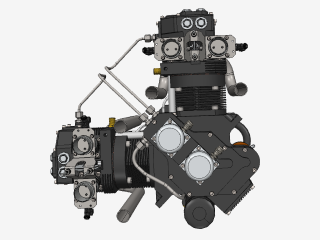
Everything you need to know about CAD file formats
A CAD file is an output of a CAD software, containing key information about the designed object: its geometry and topology representation, 3D model hierarchy, metadata, and visual attributes depending on the format of the file.
Read more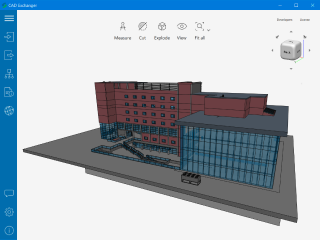
3D formats overview: IFC
In the eighth part of the series, we touch upon the neutral data exchange standard in Building Information Modeling
Read more
Integration with UNIGINE engine
This article explores the integration possibilities with the UNIGINE engine, a powerhouse in the realm of virtual simulation and game development. Learn how it can be used in applications built with the UNIGINE engine to import CAD and 3D models.
Read more